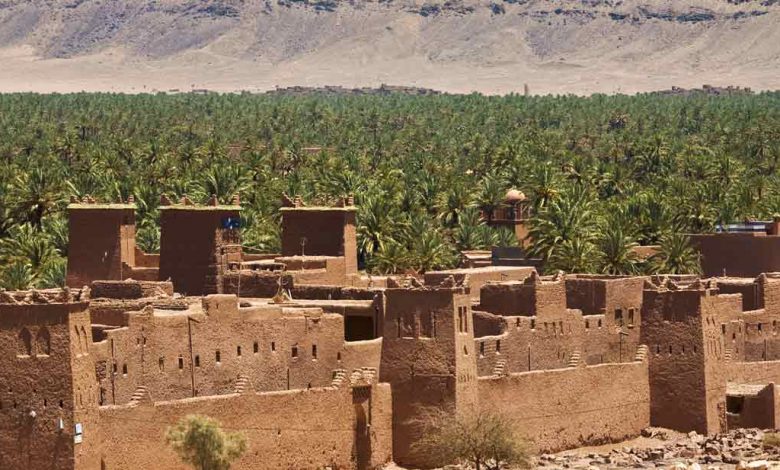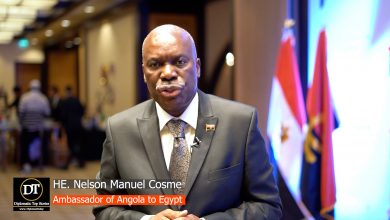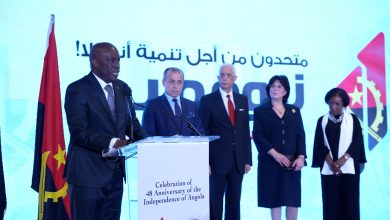In Zagora, an abundance of “blue gold” brings new opportunities | African Development Bank

Diplomat.Today
The African Development Bank
2023-05-26 00:00:00
——————————————-
South of Morocco’s Atlas Mountains, the Draa River, the kingdom’s longest river, meanders through lush palm groves before disappearing into the dunes of the Sahara. Home to one of the most beautiful oases in the country, the valley has a unique cultural heritage with its adobe kasbahs and ancient Berber ksours. One such architectural treasure, Casbah Caid Ali, built in the 18th century, is listed in Morocco’s National Heritage Register.
 A stone’s throw away, at the foot of the Jbel Kissane, the town of Agdez overlooks the wadi with its huge palm grove and date trees, the fruit of which is known as the “brown gold of the desert”. Here, the ocher mountain runs through a full gamut of beautiful colors at sunset. Further on, the provincial capital and trading hub of Zagora reminds us that this city was once a staging point for caravans arriving from Timbuktu, laden with salt and gold.
A stone’s throw away, at the foot of the Jbel Kissane, the town of Agdez overlooks the wadi with its huge palm grove and date trees, the fruit of which is known as the “brown gold of the desert”. Here, the ocher mountain runs through a full gamut of beautiful colors at sunset. Further on, the provincial capital and trading hub of Zagora reminds us that this city was once a staging point for caravans arriving from Timbuktu, laden with salt and gold.
 This postcard perfection can’t hide a major problem: water resources are under pressure from an unprecedented drought that threatens the well-being of the province’s residents. The effects of climate change, which has not spared any continent, have dried up the groundwater levels of the Kingdom. Water stress is now a matter of national concern. In the face of this crisis, Morocco has implemented comprehensive policies to counter its potentially devastating impact, particularly on agriculture, the mainstay of the country’s economy.
This postcard perfection can’t hide a major problem: water resources are under pressure from an unprecedented drought that threatens the well-being of the province’s residents. The effects of climate change, which has not spared any continent, have dried up the groundwater levels of the Kingdom. Water stress is now a matter of national concern. In the face of this crisis, Morocco has implemented comprehensive policies to counter its potentially devastating impact, particularly on agriculture, the mainstay of the country’s economy.
“Most of the wells are dry and yet the drought continues. Without water, there is no work. If things got worse, I would have to let my five employees go,” says Abdelmajid Kalb El Jamal, manager of the Dar Amazir riad in Agdez.
In this province, the state has taken the lead by starting construction of the Agdez dam in 2016. With more than €60 million in financing from the African Development Bank, the infrastructure includes a water treatment plant with a flow rate of 250 liters per second. In a few weeks, more than 125 kilometers of pipelines will supply the cities of Agdez, 27 kilometers from the dam, and Zagora, 125 kilometers from the dam, with drinking water.
 Strengthening the drinking water supply for Zagora province from the Agdez dam is part of a broader package of support from the African Development Bank for the Morocco Water Access Sustainability and Security Project.
Strengthening the drinking water supply for Zagora province from the Agdez dam is part of a broader package of support from the African Development Bank for the Morocco Water Access Sustainability and Security Project.
 This will provide drinking water to more than 300,000 people in the project area. By improving the region’s climate and economic resilience, the project will provide valuable support for tourism and cooperative and traditional craft production, while helping to preserve the local heritage.
This will provide drinking water to more than 300,000 people in the project area. By improving the region’s climate and economic resilience, the project will provide valuable support for tourism and cooperative and traditional craft production, while helping to preserve the local heritage.
All this reassures the manager of the riad Dar Amazir. “I can breathe easier now. With the guarantee of abundant drinking water, I can start making plans. I am thinking of hiring four additional staff, including a desert tour guide and leaders. And now I am confident that I will request from travel agencies for extended stays on a full board basis in the riad,” said Abdelmajid, clearly pleased.
 While he expects a 15% increase in sales in the medium term, Abdelmajid also hopes to free up sufficient resources to contribute to preserving the exceptional cultural heritage of the Draa Valley and especially the Casbah Caid Ali, where tourists are always delighted through the play of natural light in the different rooms. From the roof terrace, the unparalleled panoramic view of the nearby oasis is second to none.
While he expects a 15% increase in sales in the medium term, Abdelmajid also hopes to free up sufficient resources to contribute to preserving the exceptional cultural heritage of the Draa Valley and especially the Casbah Caid Ali, where tourists are always delighted through the play of natural light in the different rooms. From the roof terrace, the unparalleled panoramic view of the nearby oasis is second to none.
——————————————-



